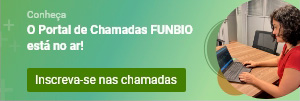The Lagoon Systems of the Eastern Fluminense, which comprises lagoons in several municipalities in the Lakes Region, is historically an environment where several families obtain their income and establish their way of life through the practice of small-scale fisheries. The Lagoon Systems of Eastern Fluminense have been producing resources for human life since centuries before the Portuguese occupation of the Brazilian territory. The remnants of this way of life are present in the shell mound archaeological sites, in around 67 places near lakes and lagoons in the region. Over time, the number of traditional fishing communities living around the lagoon has grown exponentially. Currently there are around 1260 fisherfolk who make a living from small-scale fishing in the lakes of Piratininga, Itaipu, Maricá, Guarapina, Saquarema and Araruama. This number of fisherfolk is distributed in about 54 fishing communities.
The productive chain of small-scale fishing brings together different groups, such as: active fisherfolk, fishing masters, formal leaders, representatives of the public sector, academia, and the private sector. Fish production in the lagoons reaches 2,851.5 tons/year (Costa et al., 2021. p.126). On the other hand, stories like that of fisherman Marquinhos from the fishing community at Siqueira beach in Cabo Frio, in which he reports that in his childhood people went to school so they wouldn’t become a fisherman, but that today his young son says he is studying precisely to be a fisherman like his father, shows how the culture and way of life of the fishing communities are a source of pride that runs through generations. As in Siqueira, other fishing communities also have several reports of how fisherfolk seek to bring new generations closer to fishing practices and culture. In this sense, the project “New masters: Autonomy on board and the multiplication of knowledge in the art of artisanal construction and maintenance of lagoon fishing boats” was born, which aims to strengthen the culture and art of small-scale fishing through the material production of vessels used in fisheries. In this way, the project intends to stimulate and bring new generations and the community involved in the fishing chain closer together and to value this ancient art. For this, the project will be developed based on five specific objectives: a) Masters and Apprentices: holding a repair workshop for handmade boats; b) Autonomy on board: carrying out boat engine repair workshops; c) New masters: holding craft boat building workshops; d) Fisherfolk stories: conducting group conversations and environmental education with local fisherfolk and professionals linked to artisanal shipbuilding; e) Art and Culture: carrying out cultural and sustainability activities involving surrounding schools and fishing communities. With this, it is expected that the art and culture of boat building will be perpetuated through new generations and the surrounding community will value the local way of life.
StatusIn Progress |
BiomeMarine and Coastal |


